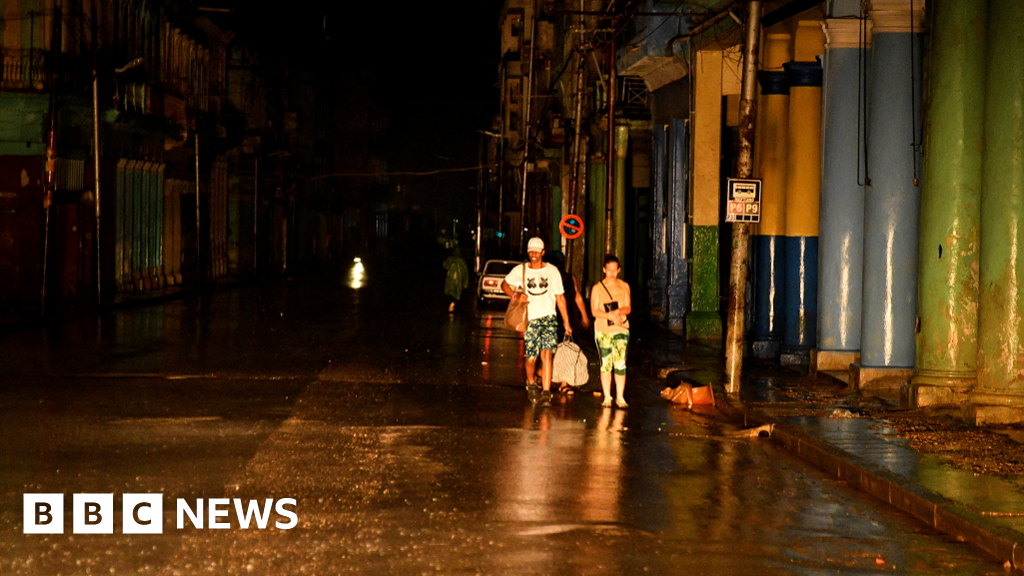Cuba Begins Power Restoration Following Nationwide Blackout from Hurricane Rafael
Cuba is in the process of restoring electricity after being hit by Hurricane Rafael, which caused a nationwide blackout on Wednesday. Strong winds reaching up to 185 km/h (115 mph) led to significant disruptions in the electricity system, marking the second time in weeks that the island nation has faced such a challenge. Authorities have evacuated at least 70,000 people from their homes as they geared up for the storm’s impact, which brought warnings of storm surges, flash flooding, and mudslides. So far, no fatalities have been reported.
The Impact of Hurricane Rafael
Hurricane Rafael made landfall on Wednesday, wreaking havoc particularly in the provinces of Artemisa and Mayabeque, as well as in the capital, Havana. President Miguel Díaz-Canel emphasized that recovery efforts will be prioritized as they move forward. "Every step from this point forward is geared towards recovery. Together we will do it," he stated during a briefing to the media.
The hurricane caused widespread destruction and flooding in western parts of the country, and reports indicate that the effects are still being felt by the vast majority of the country’s 10 million residents, who remain without power, marking another chapter in Cuba’s ongoing struggle with its aging energy infrastructure.
On the Ground: Residents Respond
In Havana, residents are facing the daunting task of cleaning up their neighborhoods. Using shovels, brooms, and buckets, citizens are clearing debris, mud, and fallen branches as they assess the damage inflicted by the powerful storm. The motorway linking the capital to Artemisa is now dotted with fallen electricity pylons, while towns along this route remain cluttered with scattered debris and remnants of destroyed structures.
Elias Perez, a resident of Artemisa, shared his experiences with the power cuts: “If you don’t have gas, you have to improvise with coal. Yesterday, my wife and I got by with coal. It’s a mess, but we have to keep going.” Such ingenuity is characteristic of many Cubans, who have learned to adapt to ongoing energy challenges played out over generations.
Natalia Martinez, also from Artemisa, echoed similar sentiments, stating, "We know how to survive; we’re in the dark all the time, you know." This resilience is an integral part of the Cuban spirit, but the current crisis underscores the urgent need for infrastructural improvements.
A Recurring Crisis
Cuba’s recent troubles with power outages are not isolated incidents. Just last month, the country experienced a four-day blackout, the result of complications within its aging energy infrastructure, coinciding with Hurricane Oscar—a less severe Category 1 storm that still left significant damage in its wake.
With each storm, the fragility of Cuba’s electricity system is further exposed, prompting discussions regarding the necessity of modernization and comprehensive maintenance of the utility networks. Experts have long pointed out that upgrading the nation’s energy infrastructure is essential for preventing such widespread outages in the future.
Looking Forward: Challenges Ahead
As rescue and recovery efforts continue, the Cuban government is faced with challenges, including reestablishing power and restoring normalcy to hundreds of thousands of affected residents. Additionally, the psychological and economic toll on communities must also be taken into account.
With 70,000 people already displaced, humanitarian efforts to support the evacuees will be key in the coming days and weeks. Aid organizations and volunteer efforts from within the country, as well as international partners, may play a vital role in providing assistance.
Community Support and Engagement
As Cuba looks toward recovery, community resilience will be tested once again. The path to rebuilding will necessitate not just electricity but also hope, support, and the active participation of its citizens.
Residents are pulling together to help one another navigate these challenges, and social media platforms are buzzing with offers of support, updates on recovery efforts, and calls to share resources.
For ongoing coverage of the situation in Cuba and its impacts on the community, be sure to check our related articles on Cuba’s Ongoing Power Issues and Hurricane Response Efforts.
Stay informed and share your thoughts on how communities can build resilience in the comments section below.
The information in this article was sourced from reports and statements made by Cuban government officials and residents following Hurricane Rafael. For the latest updates, please refer to authoritative sources such as the Meteorological Institute of Cuba and local news outlets.

